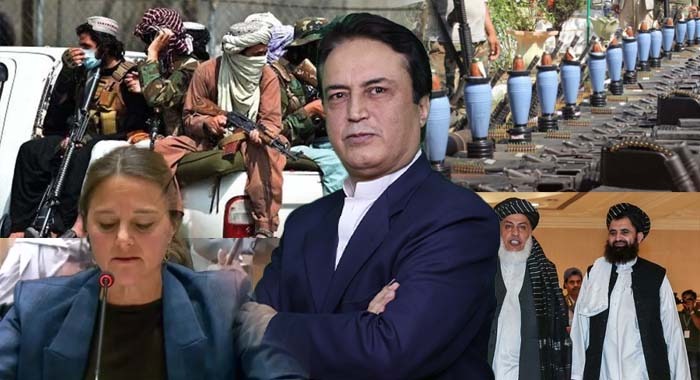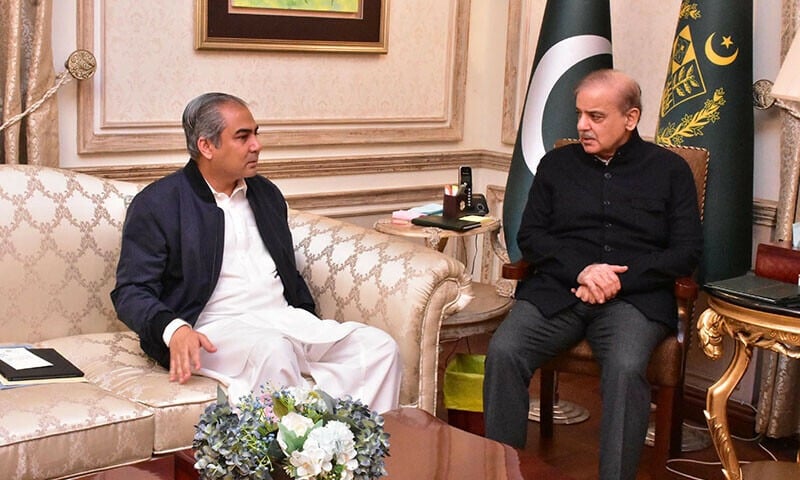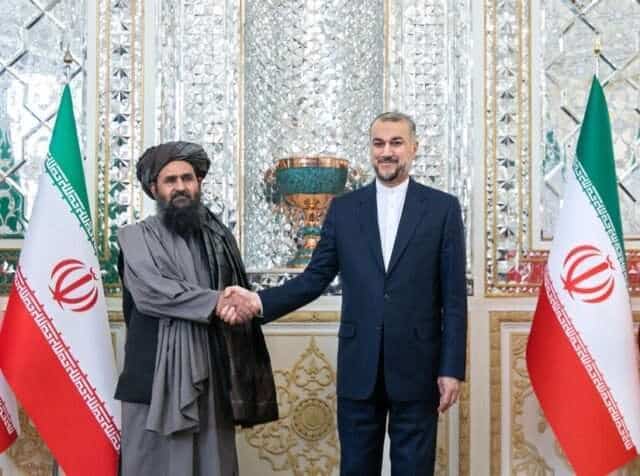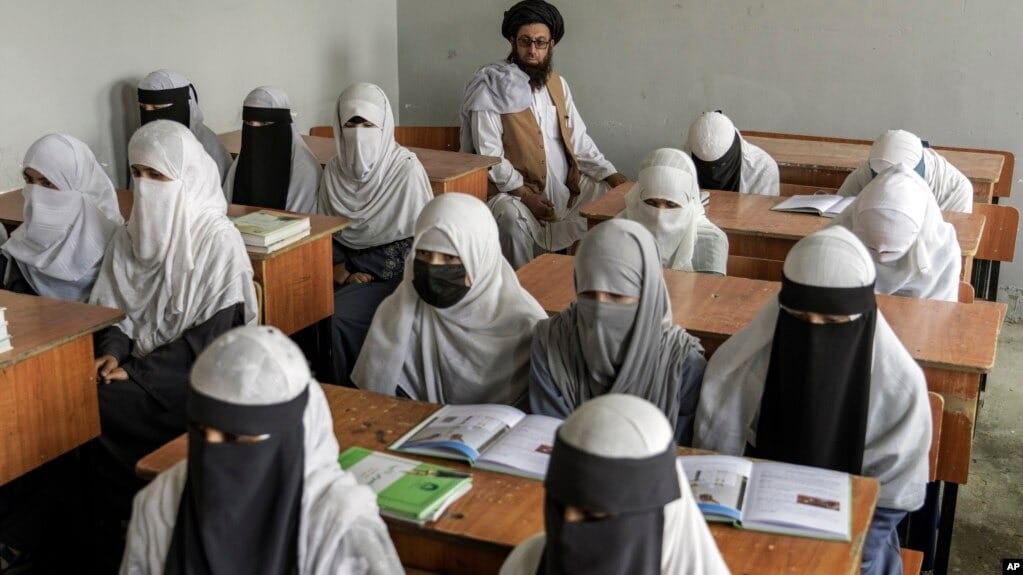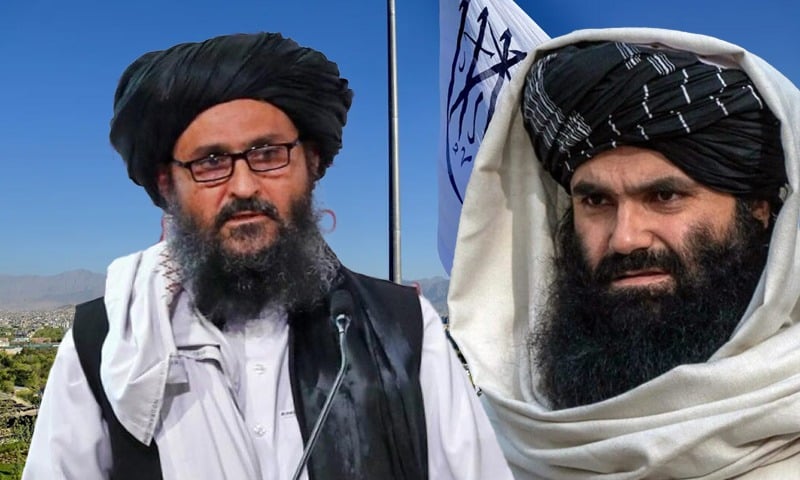(Arif Yousafzai)
Recent developments in Afghanistan-Pakistan relations underscore the complex interplay between security imperatives and economic interests in South Asia. Pakistan has reiterated a firm position: peace first, negotiations later. Islamabad has made it clear that no formal dialogue or agreements will proceed unless Afghanistan takes practical steps to curb the Tehrik-e-Taliban Pakistan (TTP) operating from its territory. This policy reflects Pakistan’s broader concern over security threats emanating from across the border, which have regional ramifications, as recently highlighted by Denmark. The Danish government identified 6,000 TTP fighters as a serious concern for regional stability, though the actual number may be significantly higher.
Simultaneously, Afghanistan is seeking to diversify its economic and trade options. The recent visit of Afghanistan’s Minister of Trade, Nooruddin Azizi, to India illustrates Kabul’s intent to secure alternative trade routes amid the prolonged closure of the Pakistan-Afghanistan border, which has been shut for over 40 days. This closure has caused substantial economic losses on both sides, affecting traders, farmers, and the broader business community. For Afghanistan, a landlocked country heavily reliant on transit through Pakistan, the closure has necessitated urgent exploration of alternate pathways to sustain trade and economic activity.
The strategic importance of India in Afghanistan’s economic calculus is clear. With a population exceeding one billion and a substantial market for Afghan goods, India represents a vital alternative. However, logistical constraints exist, as Afghanistan shares no direct land border with India, necessitating transit through other countries. This has prompted Afghanistan to consider routes via Iran’s Chabahar port, a strategic move that involves cooperation among Afghanistan, India, and Iran. By operationalizing Chabahar, Afghanistan seeks to bypass Pakistan entirely, ensuring continuity of trade while reducing its dependency on a single transit corridor.
Beyond economic concerns, regional powers are actively involved in facilitating and monitoring these developments. Russia, China, and Iran are engaged through joint platforms, emphasizing the importance of stability and urging Afghanistan not to allow its territory to be used against neighboring states. This multilateral engagement highlights the geopolitical stakes: Afghanistan’s decisions on both security and trade have implications far beyond its borders, affecting regional economic integration, security, and diplomatic relations.
Security concerns remain central to the discourse. The TTP’s presence in Afghanistan continues to pose a threat to Pakistan’s internal stability and to the broader region. Islamabad’s insistence that Afghan action against the TTP precede any negotiations is consistent with international security norms and underscores the importance of state responsibility in combating cross-border militancy. Historical precedents reinforce this position; past efforts to exert international pressure on Afghanistan have had limited success, as seen in the case of Osama bin Laden during Mullah Omar’s leadership, which demonstrates that the Afghan Taliban are unlikely to respond to external pressure alone.
The conditional stance adopted by Pakistan peace before dialogue is rational, yet the execution of this policy has at times been inconsistent. Media statements and public messaging have sometimes given the impression of a reactive rather than a strategic approach. This oscillation has hindered sustained progress in negotiations and complicated bilateral relations. A more consistent, rational policy could create the conditions for effective engagement, enabling Pakistan to protect its security interests while facilitating trade and regional stability.
Afghanistan’s trade diversification strategy is both pragmatic and necessary. The closure of the traditional Pak-Afghan trade corridor has created significant economic pressure, compelling Kabul to seek alternative markets and transit routes. India, given its market size, ranks second only to Pakistan in terms of importance for Afghan trade. Meanwhile, Iran’s Chabahar port offers a viable alternative corridor for goods, enabling Afghanistan to reduce dependency on Pakistan and strengthen regional economic integration. The collaboration among Afghanistan, India, and Iran underscores the multidimensional nature of the challenge: Afghanistan must secure economic survival while navigating complex regional security dynamics.
Pakistan, meanwhile, faces a dual challenge. On one hand, it must insist on security guarantees and concrete action against the TTP. On the other hand, it cannot afford prolonged trade disruptions, which harm Pakistani traders and the broader economy. Reports from business communities in Khyber Pakhtunkhwa and Balochistan highlight mounting concerns over economic losses due to border closures, emphasizing the urgency of a balanced approach. Islamabad’s policy must reconcile these economic imperatives with its security priorities to avoid counterproductive outcomes.
The regional context further complicates matters. Central Asian countries, such as Uzbekistan and Tajikistan, have expressed willingness to engage in trade with Afghanistan, but remain wary of militancy and cross-border attacks emanating from Afghan territory. Until Afghanistan addresses these security concerns, it cannot fully integrate into broader regional economic initiatives. This places additional pressure on Kabul to implement tangible measures against militant groups operating within its borders.
International engagement remains a key factor. Iran and Russia have offered mediation between Pakistan and Afghanistan, while India facilitates Afghanistan’s trade expansion. China’s interest adds another layer of strategic oversight. These multilateral efforts reflect a recognition that stability and economic integration in the region are interconnected. Pakistan has an opportunity to leverage this international facilitation to secure both its security interests and economic engagement, provided it adopts a consistent and pragmatic approach.
Historically, the region has witnessed the devastating consequences of unresolved conflict. Afghanistan endured two decades of war involving the United States and NATO, resulting in massive human and infrastructural losses. Despite these challenges, the international community eventually negotiated with Afghanistan, leading to the withdrawal of foreign forces. Pakistan, facing a similar imperative, must avoid policy oscillations that could prolong conflict, disrupt trade, and exacerbate regional instability. Rational, consistent engagement with Afghanistan is essential to mitigate the risk of escalation and to protect the livelihoods of millions on both sides of the border.
Ultimately, the intertwined fates of Pakistan and Afghanistan home to approximately 30 crore people necessitate mutual understanding and cooperation. Security concerns cannot indefinitely obstruct trade, nor can economic ambitions ignore the realities of cross-border militancy. The current moment offers an opportunity for Pakistan to assert a firm security stance while engaging constructively with Afghanistan to ensure economic continuity and regional stability.
In conclusion, Pakistan’s insistence on peace before negotiations, coupled with Afghanistan’s search for alternative trade routes via India and Iran, illustrates the delicate balance between security and economic interests in South Asia. The TTP issue, regional power engagement, and the urgency of trade continuity create a complex geopolitical landscape. Pakistan’s path forward requires a consistent, rational, and proactive policy that prioritizes security without undermining economic engagement. Leveraging multilateral facilitation from Iran, Russia, and India, Islamabad can protect national interests while promoting stability and prosperity in the region.

